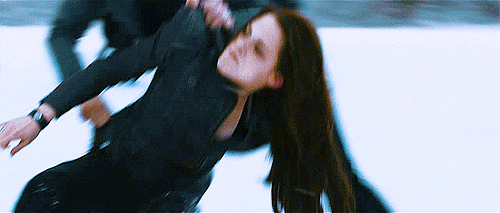The first article was about the "Three rules for warriorship" by Jenn Zuko. These rules of warriorship are the three rules for acting, objective, tactics, and obstacles. The article talked about how these applied to martial arts as well. A quote from Mamet said that as long as the protagonist wants something, the audience wants to see that this gets achieved. The way these three rules were tied into the end, was to explain how easy it is to fall into the trap of wanting to look "cool" as Jenn put it. We as actors, and even as fighters have to think of the objective; what we want in a scene or a fight. In order to achieve the objective, we need to think of the proper ways to help execute it. In other words instead of choosing tactics that look fancy, we choose tactics that will help us to succeed our obstacle. These rules are a great thing to know about because it does not just apply to acting, these rules can be applied in real life in more situations than one.
The next article was about martial arts vs. stage combat. This article was very fascinating to read because I can only imagine the long standing comparison/ rivalry between stage combat and martial arts. The article cleared up misconceptions about each of them, and it also explained how each is respectable in its own way. It had said that as a fighter, you can't judge stage combat for realism, and as an actor, you can't judge fighting for its "aesthetic grounds" as the article put it. I was glad this was mentioned because I was thinking the very thing when I was beginning to read the article. Where there may be similarities between the two, no one is better than the other. Stage combat is for entertainment, and fighting is for self defense and matches. With that said, I really encourage anyone who is into fighting or stage combat to read through this article if they don't already know.
The last article was about fight scenes in movies. I am so glad that I am not the only one out there who feels that fight scenes in movies are pointless sometimes. If you can't see what is happening, what is the purpose? I understand the reasons for cutting out certain parts of a fight and leaving somethings to the imagination for the purpose of ratings. However, I still think that the fight should be seen so, we as spectators, can experience the action! I love the Hong Kong way of fight scenes. Making the picture and movement clear makes the fight scene more engaging. This is also very applicable to stage combat as we want to be sure to make emphasis on every move so the audience can experience a clear fight!
Fight scene Shaffron returns:
I love Firefly! I have only seen a few episodes when I would sit in on a sci-fi class in high school, but the few episodes I saw made me fall in love! (If only I had netflix *sigh of despair*) Anyways, this was an episode I haven't scene so I wasn't sure what exactly was going on as far as plot. However, as far as fighting goes I would consider the fight to be expressionistic maybe swashbuckling? (I'm not too sure about that one!) The reason I say expressionistic is because it was neither too dramatic or comedic and the moves were very over emphasized that made it look a little less realistic yet still you felt the pain in the fight.
Picture for today's blog:
(I am running out of ideas here!)
I have chosen this gif for humor of course, but also because anyone who was/is a fan of Twilight stuck the movie series out for the fight scene in the last movie. Extremely expressionistic I would have to say, but if you have seen this movie, the fight scene is actually clear! Here we see Edward throwing Bella into Aro's face. There are no misconceptions there!
I hope I have enlightened you today
-Tatum R.

Did you check out the Matrix scene with the shot count, too?
ReplyDeleteYou know I haven't! I've never seen the Matrix, I guess I should!
ReplyDelete